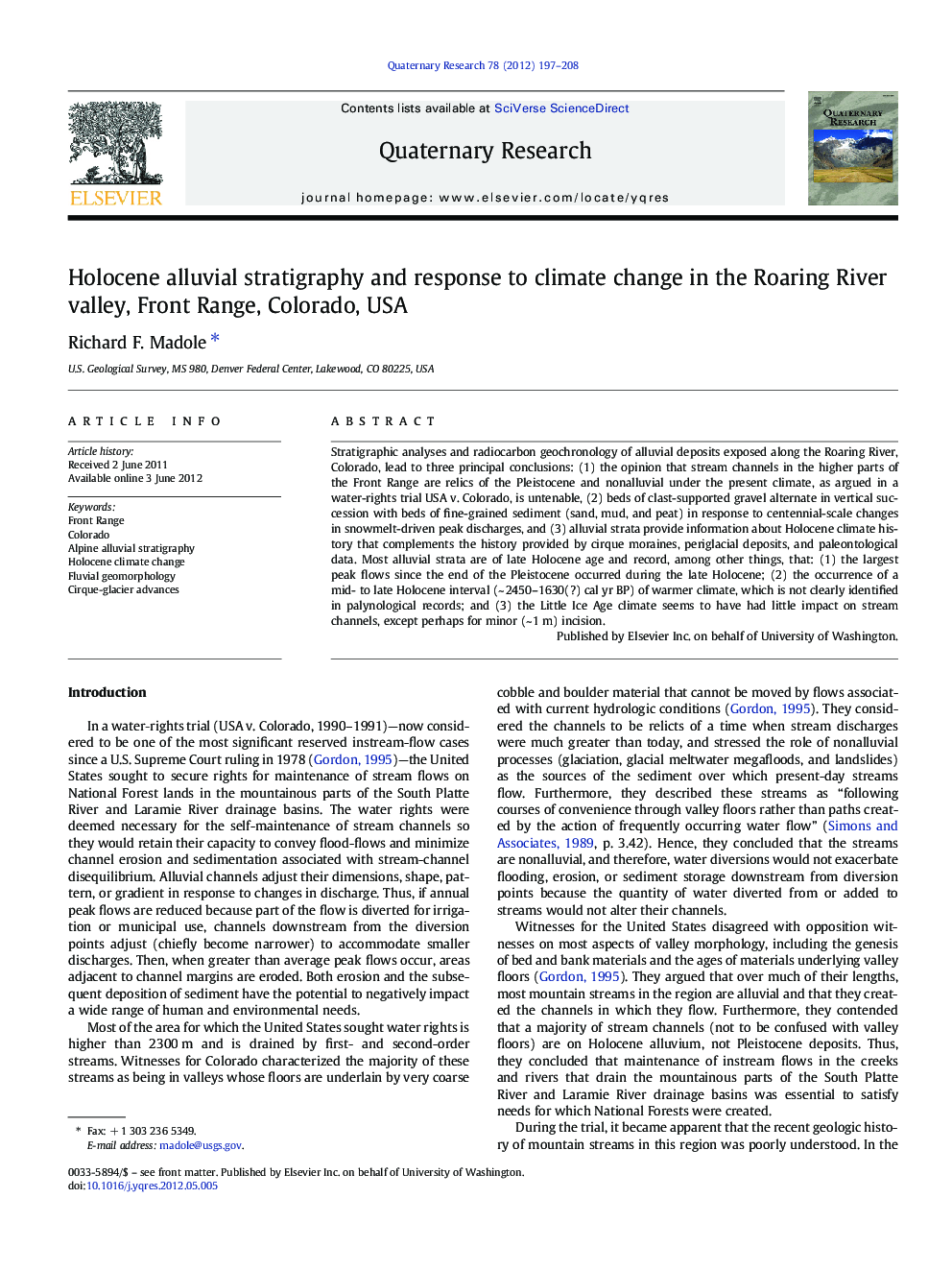| Article ID | Journal | Published Year | Pages | File Type |
|---|---|---|---|---|
| 1045450 | Quaternary Research | 2012 | 12 Pages |
Stratigraphic analyses and radiocarbon geochronology of alluvial deposits exposed along the Roaring River, Colorado, lead to three principal conclusions: (1) the opinion that stream channels in the higher parts of the Front Range are relics of the Pleistocene and nonalluvial under the present climate, as argued in a water-rights trial USA v. Colorado, is untenable, (2) beds of clast-supported gravel alternate in vertical succession with beds of fine-grained sediment (sand, mud, and peat) in response to centennial-scale changes in snowmelt-driven peak discharges, and (3) alluvial strata provide information about Holocene climate history that complements the history provided by cirque moraines, periglacial deposits, and paleontological data. Most alluvial strata are of late Holocene age and record, among other things, that: (1) the largest peak flows since the end of the Pleistocene occurred during the late Holocene; (2) the occurrence of a mid- to late Holocene interval (~ 2450–1630(?) cal yr BP) of warmer climate, which is not clearly identified in palynological records; and (3) the Little Ice Age climate seems to have had little impact on stream channels, except perhaps for minor (~ 1 m) incision.
